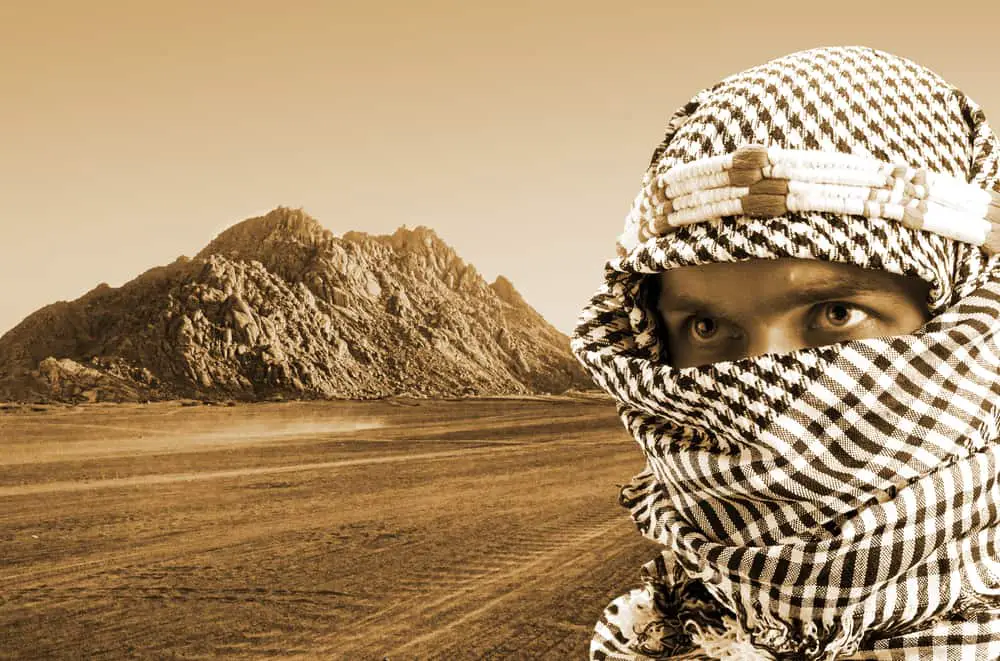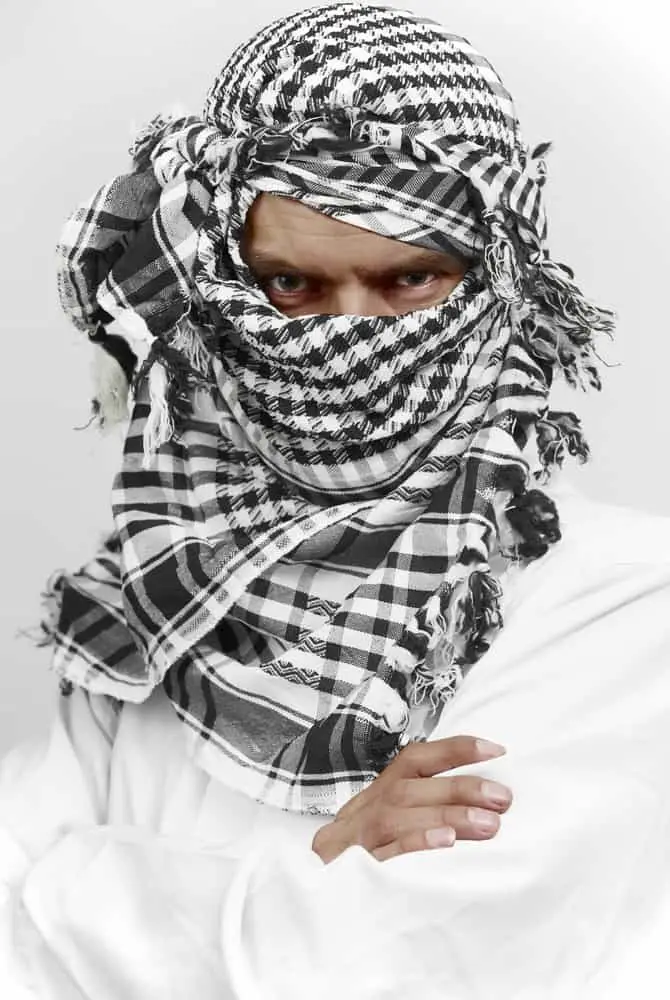From time to time, we get an update to an original article here at SurvivalCache that we want to share with our readers. “30 Uses for a Bandanna” has been a very popular post and one of our readers has written a great update.
SKIP AHEAD
The Shemagh Review
What is a Shemagh?
When I deployed to the Middle East, I found that all the locals in-country would wrap their in cloth, to cover their faces and/or heads. Even on relatively nice days, these people would cover their faces while the rest of the American soldiers would not.
I thought to myself “Well, they must be onto something here.” It was only during a power outage in our living area that I discovered why. When the lights were out, I turned on my flashlight and discovered that there was a pretty significant amount of dust illuminated by the beam of light, and it didn’t strike me as a particularly windy or dusty evening.
This prompted me to order a shemagh which, as many of you may know, is a traditional Middle Eastern headdress used for ages to protect the wearer from blowing dust, keep the sun off the neck, head, and face, and as a wrap for warmth on cold desert nights.
Using a Shemagh
Once I learned how to tie it around my head properly, which is not a difficult task with a little research on the Internet, this became one of my regular pieces of equipment. If the dust kicks up suddenly, I would put it on. This prevented the sand from finding its way into my nose, mouth, and ears. While it will not eliminate it all, it certainly helps significantly. In this type of environment, use should obviously be accompanied by goggles.
In browsing SurvivalCache.com, I came across the article “30 Uses for a Bandana” and upon reading it, I immediately concluded that a shemagh would be better suited for all of these tasks. There is a lot of material to play with, but the shemagh does not take up a lot of room and is relatively cheap. It is also 100% cotton
I have used it as a makeshift air conditioner dust filter, a sweat rag, a sand/wind/dust wrap, a gear cover during sand storms, a cooling rag (when wet), and a number of other things.I highly encourage anyone reading this to purchase one and give it a shot.
Everyday Shemagh Uses
Every day uses, and uses during a survival situation, such as a natural disaster, would be endless. If any particulates remain in the air following an earthquake, building collapse, fire, etc. and you do not have a mask (I’d bet you won’t) you will have a face and head protection.
If you find yourself without adequate shelter in the cold, one of these shemaghs could provide additional insulation. I would encourage you to read “30 Uses for a Bandana” as this is a very informative article and is completely relevant to this piece of equipment.
Shemaghs come in a number of colors too, so I have added an olive drab/black one for concealment, and a red/white one for visibility in my Bug Out Bag.
Pros and Cons
Pros
- Available in different colors
- A lot of material to work with
Cons
Wrap Up
A word of caution: I would avoid traditional colors (black/white, red/white) when traveling to the Middle East for they have certain cultural connotations. You can find them in non-traditional colors easily, such as tan/black, red/black, blue/black, etc. to suit your taste and your environment.
They can be found on Amazon for a reasonable price, or we highly recommend this multi-use tactical shemagh. Purchase one or two and you will be amazed how many uses it has, and you will add a few others to your survival kit, guaranteed. Now let’s look at some of our most recommended products you can get today.
Other Recommended Shemaghs
Here are our other top picks:
Last update on 2024-04-26 at 23:22 / Affiliate links / Images from Amazon Product Advertising API






